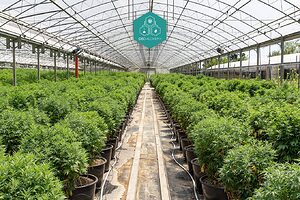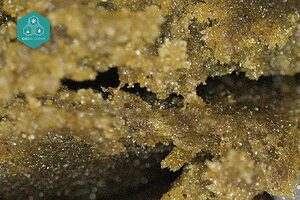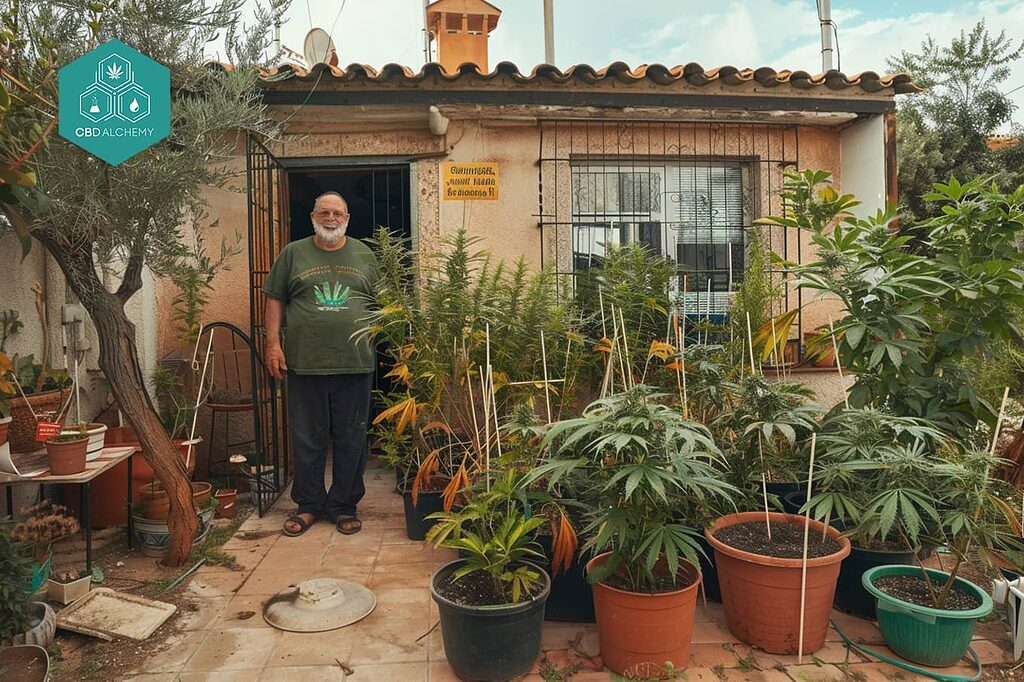
Learning the ins and outs of marijuana growing, including growing CBD flowers, will require specific strategies and a good understanding of optimal growing conditions. Our guide covers everything you need to know to achieve a successful and sustainable harvest, from choosing seeds to post-harvest care and treatment.
Throughout the article, we also delve into the legal aspects in Spain and examine the latest developments in cannabis farming techniques to keep you up to date in this ever-evolving field.
Key Points
- Selecting seeds with the right genetics is essential to the success of marijuana cultivation, and it is important to monitor and control growing conditions such as light, temperature, humidity, and nutrients during all stages of the process.
- Marijuana plants face numerous risks, including pests and diseases; prevention, constant monitoring and the application of biological and organic controls are fundamental to manage these and maintain the health of the plantation.
- Proper management of the harvest and post-harvest phase, determining the optimal harvest time and performing proper manicuring, drying and curing processes, is crucial to the final quality and potency of marijuana buds.
Marijuana Growing Basics
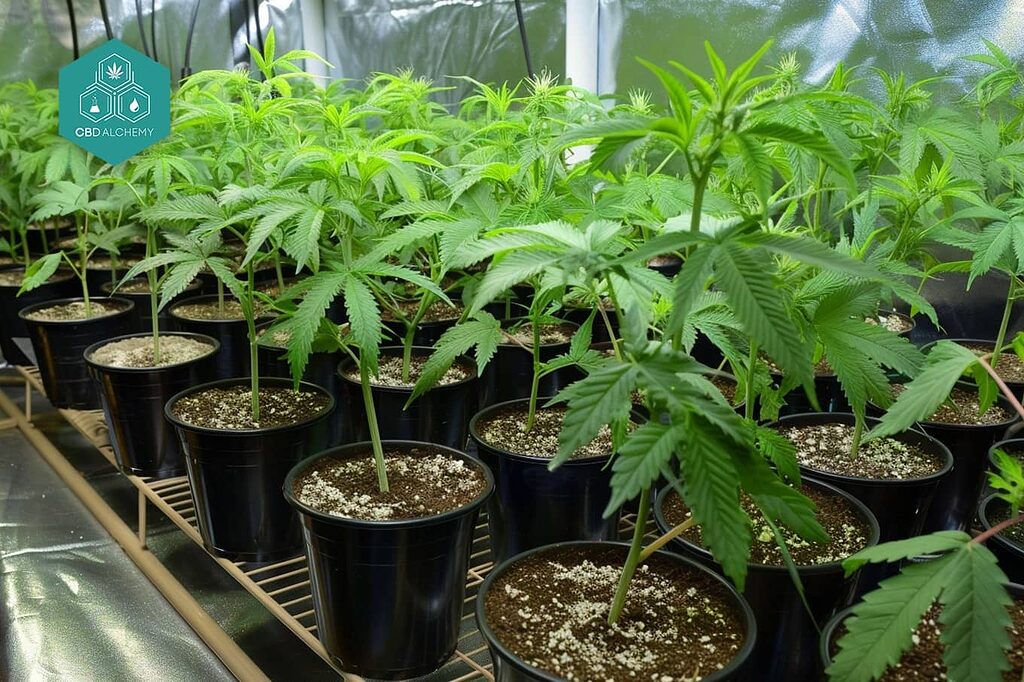
Before dipping our hands in the soil, it is vital to understand the fundamentals that will support our marijuana plants. Selecting the right seeds is the first step in every grower’s journey. The genetics of the seeds will largely determine the success of the harvest, so it is essential to choose carefully and consider the quality of the mother plant as a determining factor. During the vegetative stage, our main objective should be to promote continuous root zone development and robust branching. This requires a strong and unrestricted root system, as well as a suitable substrate and precise control of the pH and electrical conductivity (EC) of the water for effective nutrient uptake.
Another crucial aspect is the climatic conditions. These can influence the coloration of marijuana plants, causing peculiar hues that can be induced through specific cultivation techniques. Whether you are pursuing marijuana cultivation for recreational or therapeutic purposes, it is important to know that every decision made at this early stage is a building block in the construction of your plantation. Therefore, investing time in understanding and preparing the foundations of your marijuana crop is a step that will undoubtedly have a positive impact on the quality and quantity of your harvest.
Choice of Seeds: Sativa, Indica or Ruderalis
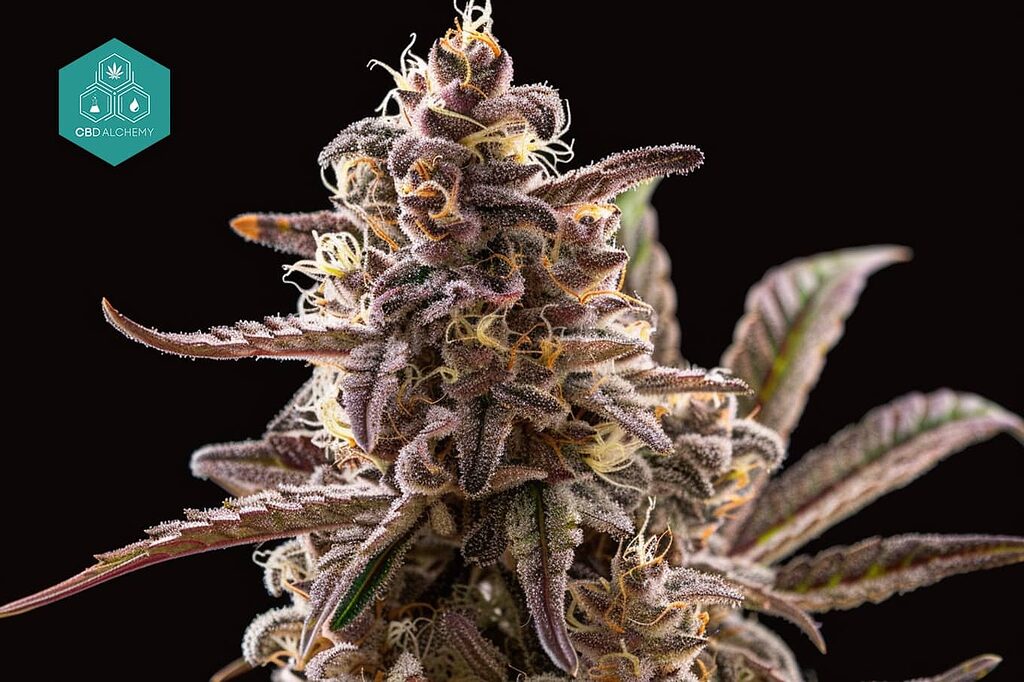
The choice of seeds is the first link in the chain of decisions that will define the cultivation of marijuana. Cannabis sativa subsp. indica is known for its manageable height, fast flowering and dense buds; it is a frequent choice for therapeutic use due to its more body-like effects. On the other hand, Cannabis ruderalis, with its small stature and adaptability to cold climates, is less well known but ideal for those with limited space or challenging climatic conditions.
When choosing a seed, you should keep in mind not only your personal preferences for taste and effect, but also the genetics and challenges each strain may present during cultivation. In addition, if you opt for autoflowering marijuana plants, you will need to handle them with special care due to their accelerated life cycle that allows them little recovery time from stress.
In this complex dance of decisions, it is important to consider your own capabilities as a grower. Are you up to the challenge that each type of seed represents? Choosing marijuana seeds is not a mere act of selection, but a statement of intent. Choose wisely and you will be sowing the seeds of success.
Optimal Climatic Conditions for Cultivation

Marijuana plants, like all living creatures, require specific conditions to reach their full potential. Seedlings need:
- A generous amount of light, ideally 18 hours or more per day, for optimal development.
- When these young marijuana plants venture outdoors, they seek at least 6 hours of direct sunlight, supplemented by several hours of indirect sunlight for healthy vegetative growth.
- Temperature also plays a determining role, with an optimal range between 20°C and 28°C during vegetative growth and a slight reduction during flowering to favor the production of high quality marijuana buds.
Humidity, that invisible mantle that envelops our marijuana plants, must be kept in a delicate balance. During the seedling stage, in a propagator, a relative humidity of 70% is ideal, decreasing to 40-50% at flowering to avoid problems such as mold. These climatic parameters are vital and should be monitored closely, as adequate water and heat will determine the fate of the plants from their initial growth.
After all, the climate in your growing area will largely determine the techniques and strategies to be employed to keep your marijuana plants happy and productive.
Choosing a Grow Space: Indoor vs Outdoor
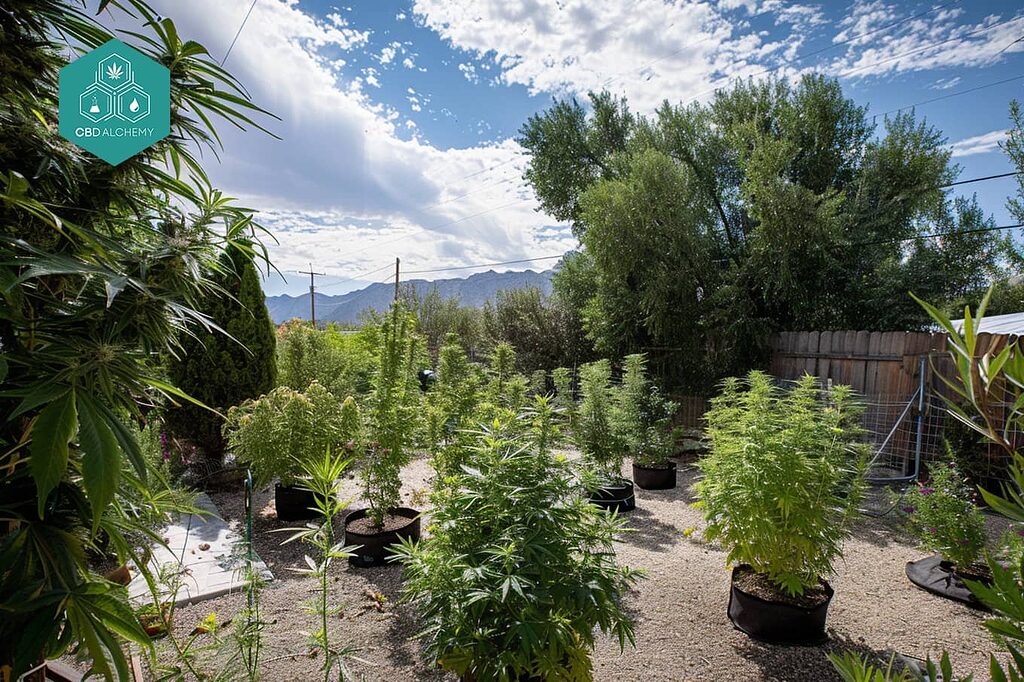
The decision to grow marijuana indoors or outdoors is a fork in the road that must be made with information and strategy. Indoor growing offers an unparalleled level of control over the environment, including light, temperature and humidity, which can translate into more frequent and abundant harvests. However, this option comes at a higher energy cost. In addition, to succeed in indoor marijuana growing, you must ensure that you have an effective extraction and ventilation system and possibly implement CO2 generators to maximize yields.
On the other hand, some growers prefer the generosity of the sun and the natural rhythm of the seasons that outdoor growing offers. Despite the challenges of inclement weather and the possibility of pests, growing marijuana outdoors can be less expensive and more rewarding for those seeking a deeper connection with nature. In addition, marijuana plants grown outdoors often develop richer terpene profiles due to exposure to a more diverse environment. In the end, the space chosen for your marijuana grow should resonate with your goals, resources and personal philosophy as a grower.
Planning and Organization of the Plantation
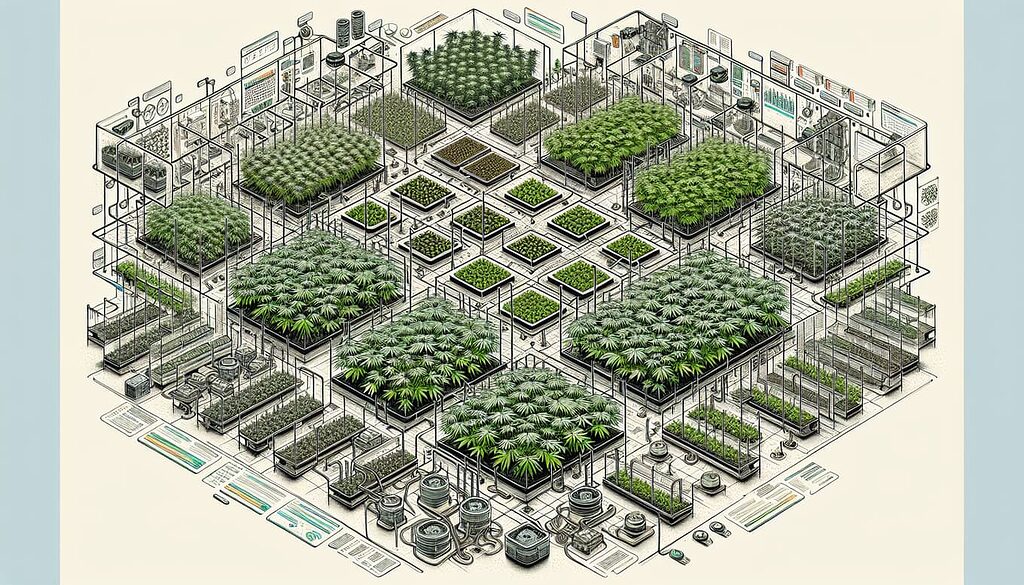
Organizing a marijuana grow goes beyond simply planting seeds. It requires careful consideration of the available space and an intelligent design that allows each plant to enjoy the airflow and light needed to thrive. In addition, the layout of planting, growing and drying areas is a puzzle that must be assembled with precision, ensuring that temperature and humidity are optimal for each stage of the process.
An inventory of resources, from soil to nutrients to equipment, is vital to avoid unpleasant surprises as marijuana plants grow and their needs change. Time management is also a critical factor in planting success. Keeping detailed track of care activities facilitates better estimation of time to harvest and allows for quick response to any unforeseen events.
Like a captain at the helm of a ship, the grower must be adept at steering his or her plantation, keeping an eye on the horizon as he or she navigates the daily currents of marijuana plant care.
Plantation Design: Making the Most of Space
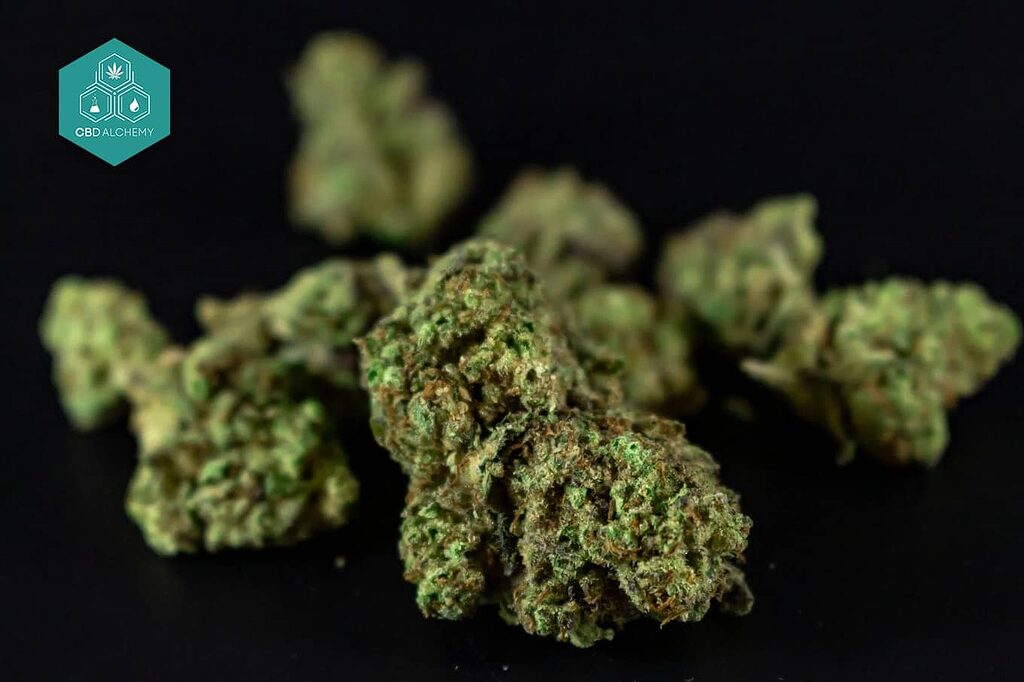
When designing a marijuana planter, every inch counts. Especially in tight spaces, you can do the following to optimize the productivity of your crops:
- Choose compact and efficient lights, such as CFL or LED.
- Optimize light distribution.
- Implement techniques such as Screen of Green (SCROG) to develop a uniform canopy of plants.
- Maximize light exposure.
- Improve marijuana bud production.
These strategies will help you get better results in your plantation.
Smart use of vertical space through specialized growing systems and choosing the size and shape of plant containers are other ways to get the most out of your growing area. In addition, hydroponic growing systems can save space and improve efficiency by allowing roots to grow in smaller areas. With careful planning and creativity, even the smallest of spaces can be transformed into a green oasis of marijuana.
Cultivation Calendar: Cycles and Stages
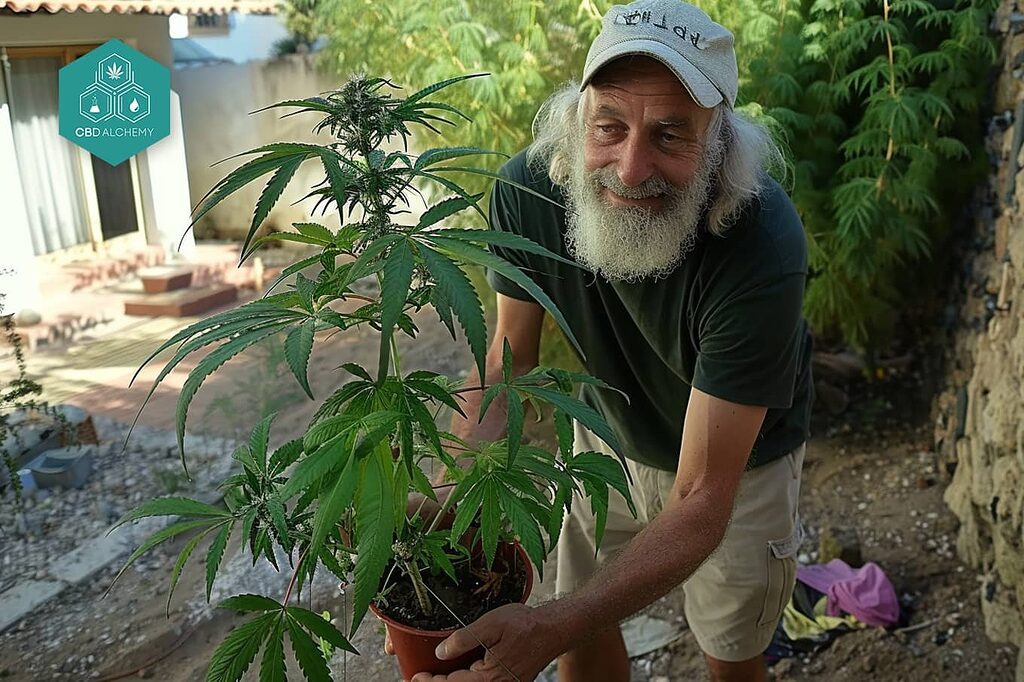
Growing marijuana is a synchronized dance with time and the seasons. Understanding the natural cycles of the plant is essential to properly plan the cultivation process. From germination to flowering, each phase has its own rhythms and specific light, nutrient and water needs. Knowing when and how to adapt these variables can make the difference between a mediocre crop and a bountiful one.
For example, in the southern hemisphere, germination begins in spring, around October or November, to take full advantage of natural sunlight cycles. The duration of the vegetative stage varies considerably, and different marijuana strains have different flowering times, which can range from 8 weeks for indicas to 14 weeks for sativas.
The pre-flowering stage, where the photoperiods change from 18 to 12 hours of light, requires special attention to ensure that the plants move smoothly into the next stage of their development. The marijuana growing calendar should be your guide and constant companion, helping you to anticipate and prepare for each stage of your plants’ growth.
Quality Control: Testing and Analysis
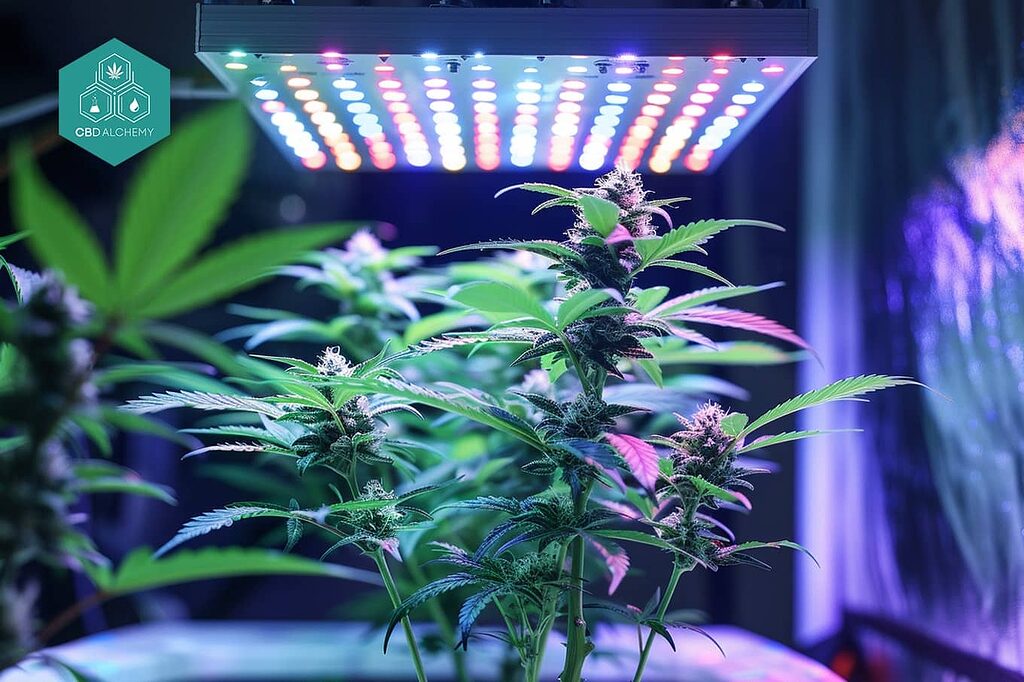
Quality control is not just a final step, but a constant companion throughout the entire marijuana production process. Companies like CBD Alchemy subject their CBD flowers to quality control and laboratory testing to verify that their potency, purity and safety meet the highest standards. This level of attention is what differentiates a superior product from a mediocre one. Therefore, regular testing of your marijuana plants will help you identify possible contaminants or deviations in cannabinoid concentration, and take corrective action in a timely manner.
Quality also implies a commitment to excellence. For marijuana growers, this means a constant investment in knowledge and technology, making sure that every flower harvested is worthy of bearing the seal of your plantation. When it comes to selling or consuming your buds, having the certainty that they have undergone rigorous quality control will not only give you peace of mind but also build a reputation of trust and professionalism in an increasingly competitive market.
Risk Management for Marijuana Growers
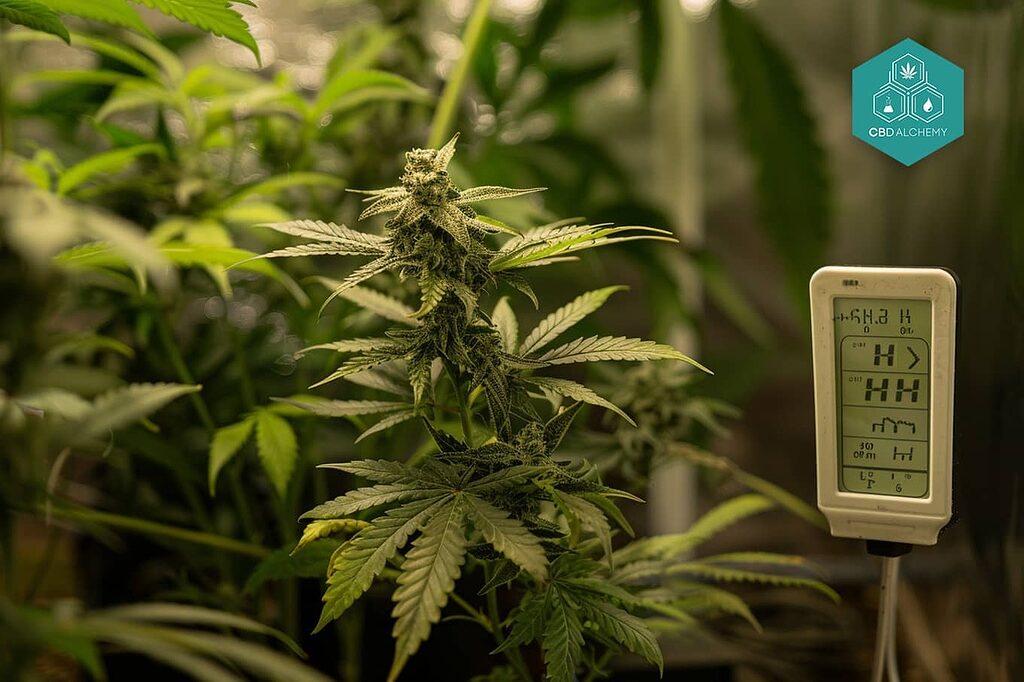
A marijuana plantation, like any other type of agriculture, is exposed to risks that can affect its health and yield. Pests are one of the most common challenges in marijuana cultivation, especially outdoors, where insects such as whiteflies, spider mites and leafhoppers can wreak havoc. In addition, the use of biological control strategies can be a sustainable and more environmentally friendly solution compared to synthetic methods, offering pest control that integrates with nature.
Risk management is an integral part of planning and maintaining a marijuana plantation. It includes everything from careful seed and substrate selection to implementing safety measures to protect plants from adverse environmental factors and human threats. Being prepared to respond to these challenges is vital, and can mean the difference between a lost crop and a successful one.
With an integrated control strategy, you can ensure that your marijuana plants grow healthy and strong, ready to produce the high-quality buds you’re looking for.
Pest Prevention and Treatment
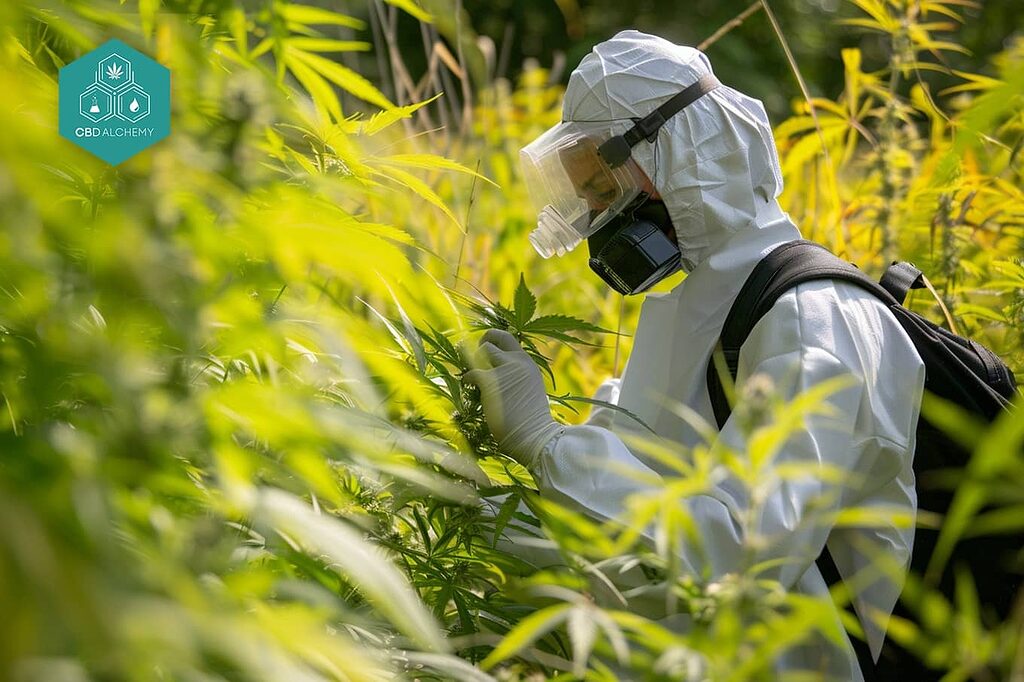
The most effective approach to managing pests in a marijuana grow is prevention. An integrated management system that includes:
- Constant monitoring
- Proper cultural practices
- Physical barriers
- Biological controls
This is the best line of defense against these unwanted visitors.
Companion planting and the introduction of beneficial insects, for example, can be highly effective biological control strategies in outdoor crops, although they may require more time and effort than synthetic methods.
Sometimes, however, pests can take even the most diligent grower by surprise. In such cases, the use of organic pesticides and fungicides may be necessary to eradicate the threat quickly and prevent further damage to marijuana plants.
A combined approach that integrates both biological and synthetic control practices can provide a more robust and effective pest management solution, ensuring the health and productivity of your marijuana plantation.
Common Problems and Solutions
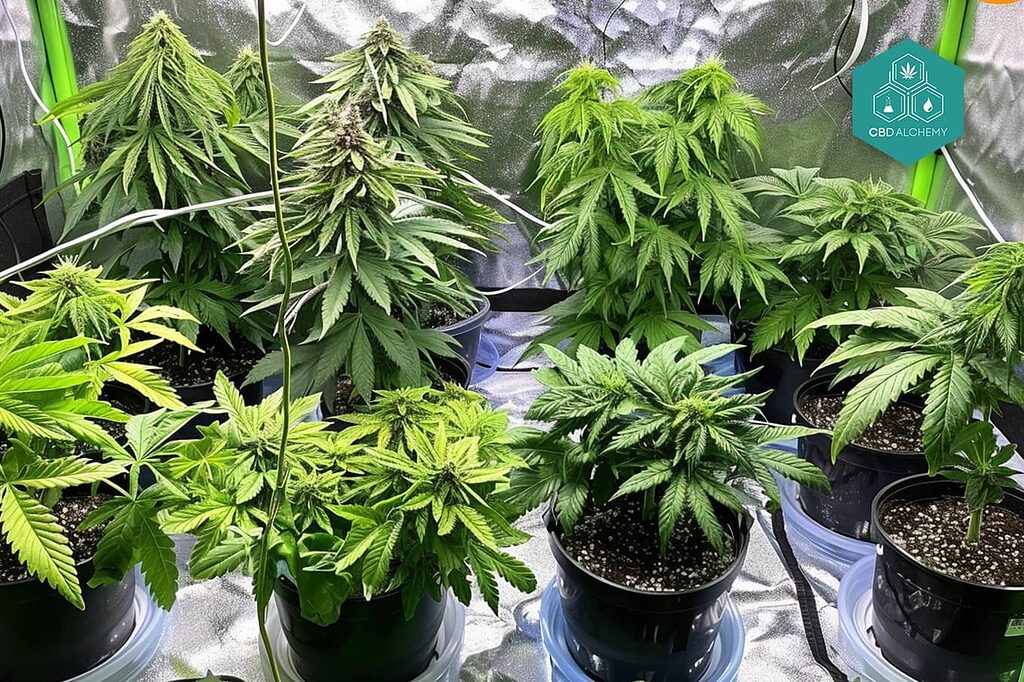
Marijuana plantations can face a variety of problems, from nutritional deficiencies to diseases and environmental stressors. The key to maintaining a healthy grow is the ability to quickly identify these problems and address them effectively. Visual guides and the knowledge accumulated through experience can be invaluable tools for diagnosing and treating problems as they arise. Once the problem is identified, organic remedies are often the most recommended solutions to maintain the integrity of the grow and the safety of the final product.
Marijuana growers should always be on the lookout for signs of problems with their plants, such as yellowing leaves, stunted growth or the appearance of spots. These symptoms can indicate a variety of problems that, if left untreated, can diminish the quality and quantity of the crop. By maintaining a proactive approach and a critical eye, growers can ensure that their marijuana plants thrive despite any obstacles they may encounter along the way.
Advanced Growing Techniques
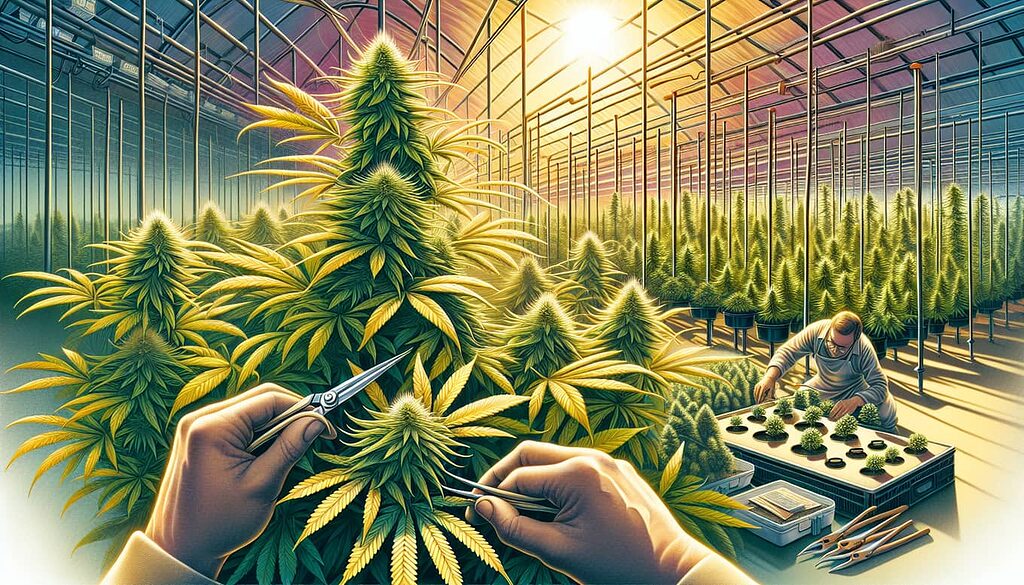
In addition to traditional growing practices, there are advanced techniques that can help maximize production and improve the quality of marijuana plants. Some of these techniques are:
- Adjusting the light cycle to 12 hours of light and 12 hours of darkness to initiate flowering of photoperiod plants in indoor grows.
- Perform pruning and plant training methods to generate more sites where buds will develop, which can significantly increase yields.
- Use advanced equipment and efficient cultivation techniques.
These practices can contribute to the production of higher quality plants and help prevent common problems such as pests in indoor crops.
The use of biological controls, such as nematodes, mycorrhizae and compost teas, not only offers targeted, non-toxic pest management, but also promotes a more sustainable and environmentally friendly growing system. These advanced techniques require an investment of time and resources, but the long-term benefits to marijuana plant health and crop quality can be enormous. By incorporating these practices into your grow, you’ll be taking a step toward a more sophisticated and, potentially, more profitable crop.
Pruning and Training to Maximize Production
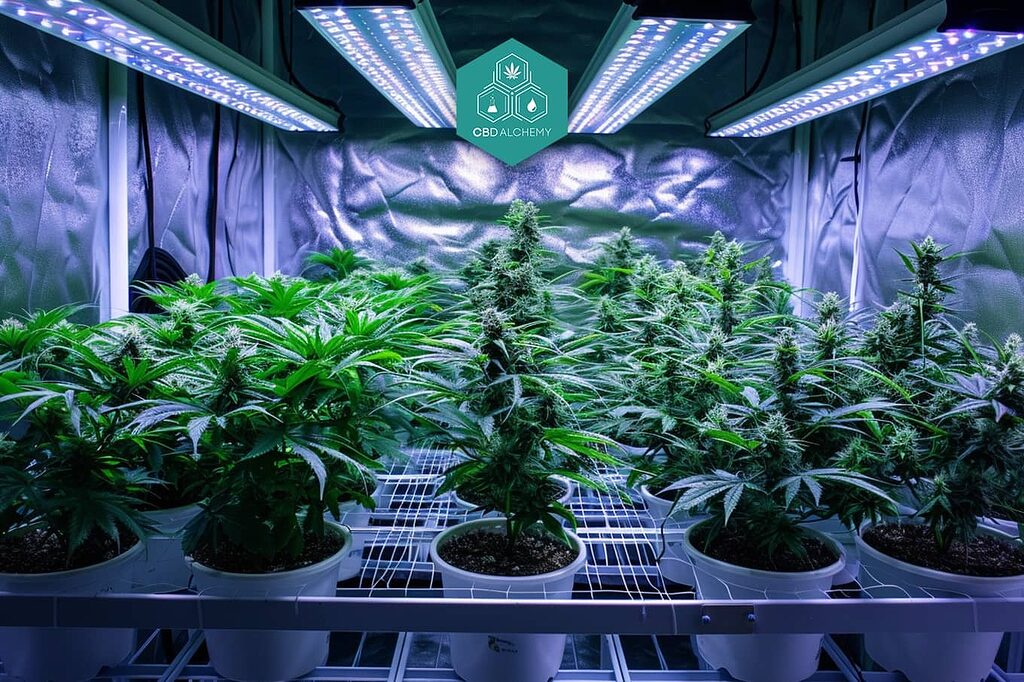
Pruning and training are essential techniques in marijuana growing to optimize bud production. Low Stress Training (LST), which involves carefully bending and tying branches, can improve the plant’s growth structure and light exposure without causing significant damage. Another popular technique is ‘screen of green’ (SCROG), which uses a mesh to create a canopy of plants at a uniform level, ensuring that all parts of the plant receive the same amount of light and air. This not only improves production but also the quality of the marijuana buds.
Careful defoliation during the vegetative stage and mainlining are two other strategies that can increase the quantity and quality of the harvest. These techniques must be done with precision and at the right time so as not to slow the growth of the marijuana plants or eliminate potential flowering points.
With practice and attention to detail, pruning and training can transform an average planting into a high-yielding one.
Substrate and Nutrient Optimization
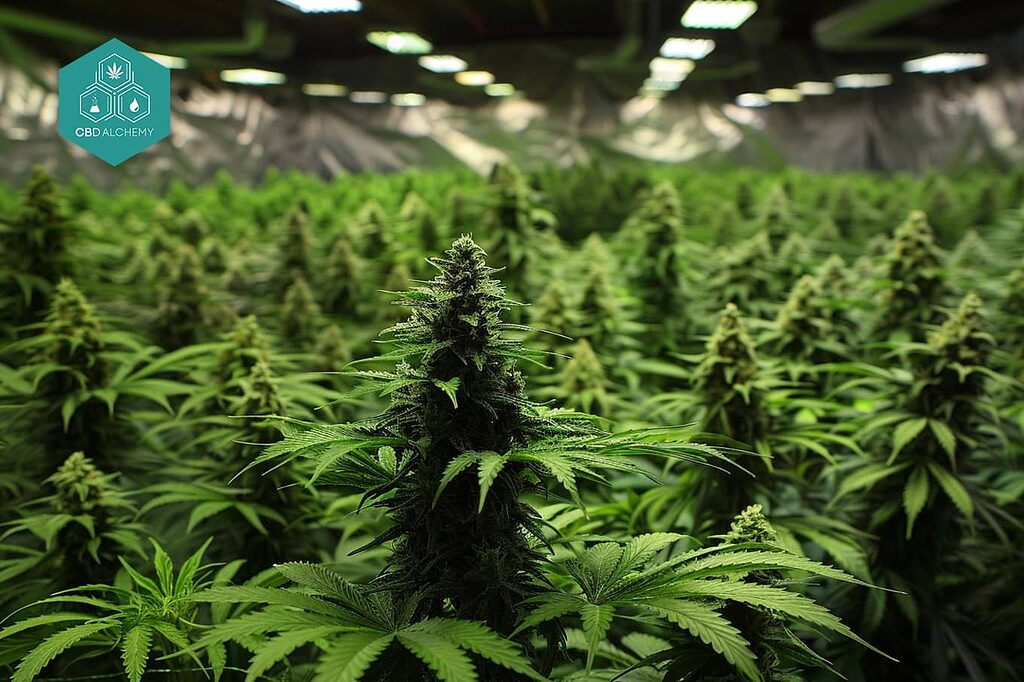
The soil in which marijuana plants grow and the nutrients they receive are critical to their health and productivity. The main macronutrients required by the marijuana plant are Nitrogen, Phosphorus and Potassium, each playing a crucial role at different stages of growth. During the fattening phase, for example, plants need higher amounts of Phosphorus and Potassium to develop large and resinous buds. This supply is made approximately one month after the beginning of flowering, when the flower tails start to form.
The use of additives such as Bud Candy can provide additional sugars during the flowering stage, improving the quality of the marijuana buds. In addition, the choice between substrates such as soil, hydroponic and aeroponic, as well as between organic and mineral fertilizers, will depend on the advantages and disadvantages that each offers in the context of the specific marijuana crop.
Substrate and nutrient optimization is a technical aspect that requires ongoing understanding and adjustment, but is essential to ensure that your marijuana plants reach their full potential.
Harvest and Post-Harvest: Final Processes
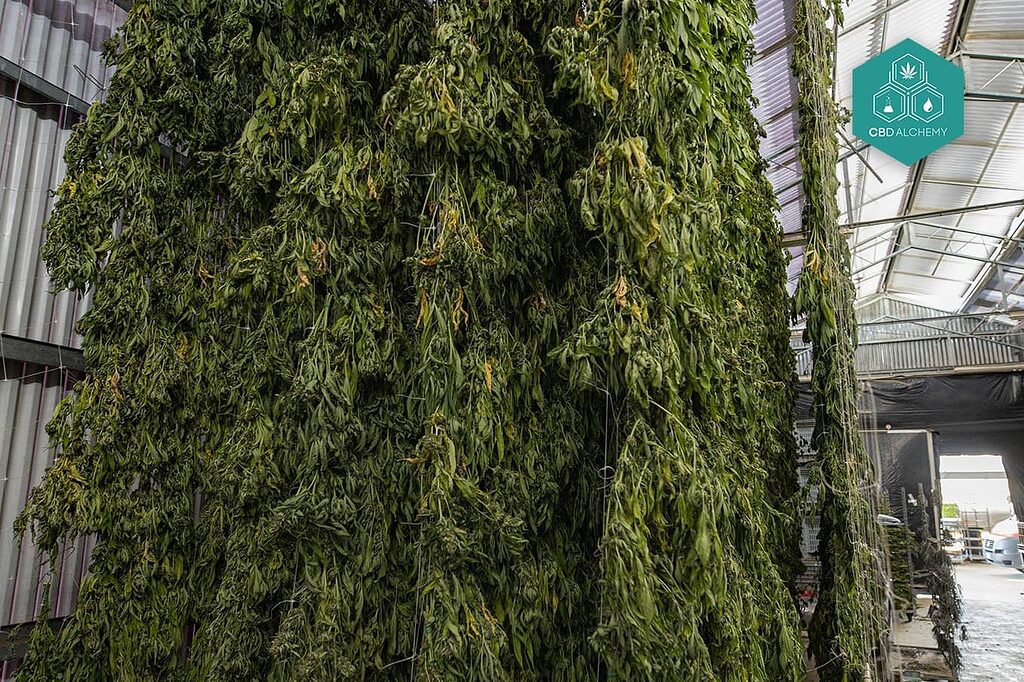
Reaching the harvest stage is a milestone in every marijuana grower’s life, a moment that marks the culmination of months of work and care. Once you have confirmed that your marijuana plants are mature, the careful process of harvesting with pruning shears begins.
Manicuring, whether green or dry, prepares the buds for drying, an essential step that, if done correctly, preserves the quality of the cannabinoids and maximizes the potency and flavor of the final product.
Curing, although often underestimated, is equally critical to the development of a high quality product. This process, which typically lasts from two weeks to several months, is essential for removing residual water, preventing mold and improving the preservation and flavor of the smoke.
By devoting time and attention to each of these final steps, you can ensure that your marijuana buds are of the highest possible quality, ready to enjoy or take to market.
Ideal Time to Harvest
Determining the optimal time to harvest your marijuana plants can be an art in itself. Trichomes, those little stems with a mushroom-shaped end, are one of the best visual tools for judging the maturity of your plants. When the trichomes are transparent, it is a sign that it is still early to harvest, as the plant has not produced enough cannabinoids and terpenes. As the trichomes become opaque and milky, this indicates an increase in cannabinoid concentration, which is ideal for a classic, THC-rich marijuana harvest.
The amber coloration of the trichomes suggests a more advanced maturity and a more relaxing effect of the final product. Most marijuana growers seek to harvest when most of the trichomes are mature but before they all change to amber to obtain a balance between potency and effect. Watching your plants and learning to read these little indicators will help you make the right decision and harvest at the right time to get the desired results.
Manicuring and Drying the Buds
After harvesting, trimming is the first step in preparing the marijuana buds for consumption. You can opt for fresh manicuring, which involves removing the sugar leaves immediately, or dry manicuring, which is done once the buds have lost their water content. Both techniques have their advantages, and the choice depends on the grower and drying conditions.
The process of drying the buds is critical and must be done carefully, as drying too quickly can degrade the quality of the cannabinoids, while too slow a process can encourage the development of mold.
For proper drying, it is important to keep the following in mind:
- Make sure you have adequate air circulation during drying.
- Optimal relative humidity is between 45-55%.
- The average drying time is 7-12 days, but can vary depending on the environmental conditions and the size of the buds.
By following these tips, you will be able to obtain good quality buds.
Once the buds are properly dried, they are stored in airtight containers to start the curing process, which lasts at least two weeks and can be extended up to 4-8 weeks to further develop the flavor and aroma of the marijuana buds.
Curing: Improving Flavor and Potency
Curing is an often overlooked post-harvest stage that has a huge impact on the final quality of marijuana buds. During this process, humidity is slowly reduced, allowing terpenes and cannabinoids to develop and be preserved in the buds. Cannatrol’s Vaportrol technology, for example, has been approved by European patents and offers a comprehensive system for drying, curing and storing cannabis, improving product quality and preservation.
Terpene retention with this technology is 16% higher than traditional methods, contributing to a richer flavor profile and a better consumption experience. In addition, this technology is suitable for a variety of grow sizes, from personal to large-scale production, demonstrating the versatility and adaptability of innovations in the cannabis cultivation sector.
Curing is a phase where patience is rewarded with a marijuana product of enhanced flavor and potency, and should not be underestimated by any serious grower.
Legal Aspects of Marijuana Cultivation in Spain
In Spain, the legal landscape for marijuana cultivation has undergone significant changes in recent years. It is legal to buy and consume CBD flowers, as long as the THC content is less than 0.3%. This has opened the door to an emerging market for cannabis products with therapeutic effects and without the psychoactive effects of THC.
However, it is important for marijuana growers to be well-informed about current laws to avoid legal problems. Be sure to keep your grow within the confines of the law, which will not only protect your investment but also allow you to enjoy the fruits of your labor with peace of mind.
Innovations in Cannabis Cultivation
The field of cannabis cultivation is constantly evolving, with innovations that seek to optimize production and improve plant quality. One of these innovations is aeroponic cultivation, a cutting-edge technique that uses the nebulization of nutrients on the roots suspended in the air, which represents a highly efficient alternative to traditional hydroponic methods. These technological advances not only allow greater control over the growth factors of marijuana plants, but can also improve efficiency in the use of resources such as water and nutrients.
Cannatrol’s Vaportrol technology is another example of how innovation is transforming cannabis cultivation today. This technology, which has been patented in the European Union, offers an integrated system for drying and curing cannabis, significantly improving the quality of the process and thus the final product. These innovations demonstrate the growing adoption of new technologies in the cannabis cultivation market in Europe and are key to maintaining competitiveness and sustainability in an ever-growing sector.
Summary
Throughout this journey through marijuana cultivation, we have explored everything from the foundations of successful cultivation to the most advanced techniques that can help optimize every stage of the process. Careful seed selection and optimal growing conditions are the starting point for growing high-quality marijuana plants. Selection of growing space, whether indoors or outdoors, and careful planning and design are essential to make the best use of available resources. Risk management, quality control and knowledge of legal aspects are essential to maintain the health of the plants and the integrity of the business.
Pruning techniques, training and optimization of substrate and nutrients can take your plantation to the next level, resulting in more abundant and better quality buds. Harvesting and post-harvesting, including drying and curing, are crucial to enhancing the flavor and potency of your marijuana buds. Finally, staying on top of innovations and trends in the industry can give you a competitive edge and help you produce a superior product. With passion, patience and the application of this knowledge, you can achieve success in the fascinating world of marijuana cultivation.
Frequently Asked Questions
How can I guarantee the quality of my CBD flowers?
It is crucial to perform quality controls and laboratory tests to guarantee the quality of CBD flowers, as CBD Alchemy does to verify the purity, potency and safety of its products.
Which marijuana growing technique is suitable for small spaces?
The Screen of Green (SCROG) growing technique and the use of compact lights such as CFL or LED are suitable for small spaces, as they optimize light distribution and maximize the use of vertical space. It is recommended to implement these techniques to obtain good results in small spaces.
When is the best time to harvest marijuana?
The best time to harvest marijuana is when most of the trichomes are mature but not all of them have changed to amber, which indicates an optimal concentration of cannabinoids and terpenes. This will result in a higher quality product.
Is it legal to grow marijuana in Spain?
Yes, marijuana cultivation is legal in Spain as long as it complies with local regulations and the THC content does not exceed 0.3%. It is important to be well informed about the specific laws in each region.
What innovations are changing cannabis cultivation?
Innovations such as aeroponic growing and Cannatrol’s Vaportrol technology are transforming cannabis cultivation by providing more efficient and controlled methods for growing, drying and curing plants. These innovations are improving the quality and efficiency of the crop.


